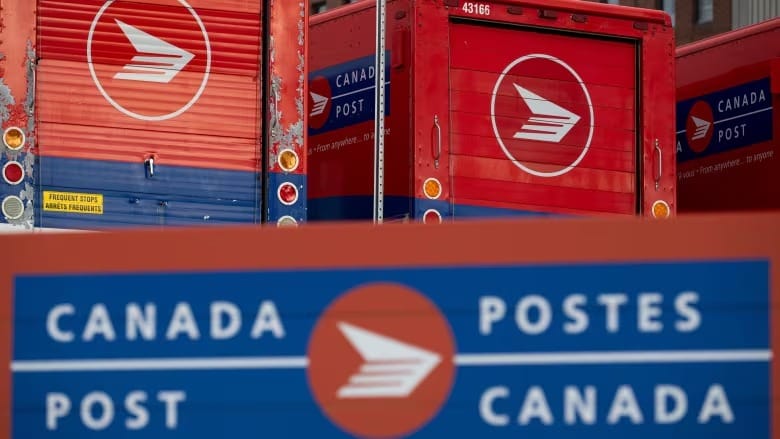Liberals say they will rein in temporary foreign worker program after historic influx
Canada continues to admit TFWs, as immigrant, youth unemployment rates tick up

On Sunday, Housing Minister Sean Fraser announced that the federal government will reduce the influx of temporary foreign workers (TFWs) into Canada following a significant post-COVID increase, which some researchers argue has contributed to rising unemployment among youth and immigrants.
Speaking to reporters in Dartmouth, N.S., before a Liberal cabinet retreat in Halifax, Fraser defended the government's previous decision to ease TFW regulations during the pandemic to address severe staffing shortages. However, he acknowledged that the current labour market conditions have changed, necessitating adjustments to the program.
Recent federal data shows that unemployment rates for immigrants and young people have increased to troubling levels in recent months.
"The landscape has changed. We don't see that acute labour shortage that existed even two years ago. As the economic landscape changes, so too must the policy landscape," Fraser said.
He indicated that future changes would focus on ensuring that policies designed to grow the Canadian labour force prioritize opportunities for Canadian workers.
Fraser did not provide specifics on how many TFWs will be admitted going forward or which aspects of the program might be altered. However, he acknowledged that while Canada can accommodate the number of new permanent residents—expected to be about 485,000 in 2024—non-permanent immigration programs for foreign workers and students are placing additional pressure on the housing supply.
Historically, the TFW program has been shaped by employers' needs with few hard caps, but the government is considering imposing stricter limits while still supporting businesses that genuinely require the program to build their workforce.

Post-COVID Changes to TFW Regulations
The agricultural sector has traditionally depended on TFWs for food production. Fraser noted the significant increase in TFW numbers despite a reduced labour shortage compared to two years ago.
The growth of non-permanent residents, including TFWs, international students, and asylum seekers, has accelerated since the government relaxed TFW regulations and allowed Canadian colleges and universities to expand their international student populations. In the past three years, the number of non-permanent residents has more than doubled from about 1.3 million in 2021 to nearly 2.8 million in the second quarter of this year, according to Statistics Canada.
Of this number, 1.3 million are on work permits, which include TFWs. The low-wage TFW sector has expanded from 15,817 workers in 2016 to 83,654 in 2023. This surge followed the federal government's decision in April 2022 to lift a restriction preventing employers in high-unemployment areas from hiring low-wage foreign workers and to increase the allowable proportion of low-wage TFWs from 10 percent to 20 percent, with a 30 percent limit for some sectors. In March, the 30 percent limit was reduced back to 20 percent.
The relaxed regulations have led to an increase in foreign workers being brought in for entry-level positions in various industries, even in high-unemployment areas. A recent United Nations report criticized Canada's TFW program as a potential breeding ground for modern slavery.

Rising Unemployment Rates
Researchers suggest that the influx of low-wage foreign workers has negatively impacted the job prospects for immigrants and young people. The Bank of Canada's latest report indicates that the unemployment rate for immigrants is now 11.6 percent, significantly higher than the overall unemployment rate of 6.4 percent as of June.
"The softening of the labour market has made it even harder for newcomers to find a job and be attached to the labour force," the central bank stated in its July report.
For Canadian-born Black people, the unemployment rate is 11.9 percent, while youth unemployment, for those aged 15 to 24, stands at 13.5 percent—the highest in a decade, according to federal data.
"Young Canadian workers are having an exceptionally tough summer," said Mike Moffatt, senior director of policy at the Smart Prosperity Institute, based at the University of Ottawa.
Moffatt pointed to Canada’s Labour Force Survey, which shows that employment among 15- to 19-year-olds last month was the second lowest on record, just ahead of the pandemic lockdown year of 2020.
"Outside of 2020, when we were in lockdown, 2024 has been the worst year on record for teenagers to get a summer job," Moffatt said. "Despite the challenges teenagers are facing in the job market, the number of temporary foreign workers approved for those same positions has never been higher."
Moffatt, who will present to the federal cabinet at its Halifax retreat, advocates for ending the low-wage TFW stream to restore balance in the lower end of the labour market, where immigrants and young people are competing against foreign workers willing to accept lower wages.





